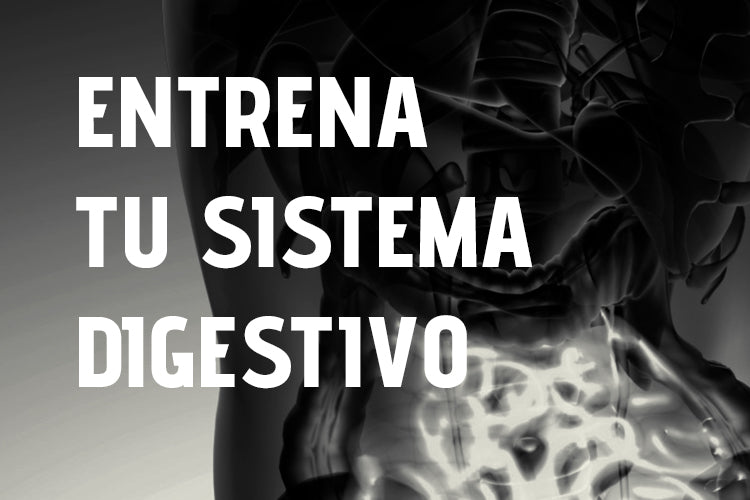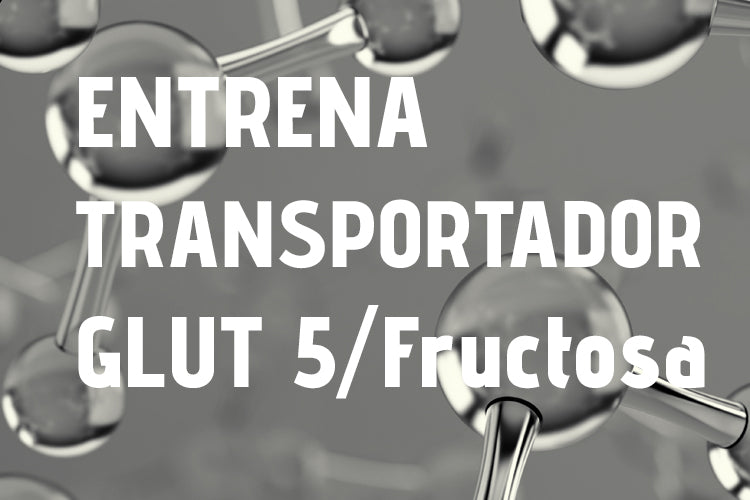We know that Digestive System Training is much more than just ingesting food and liquid during HC (guide »training the gut»)
In reality, it's a method, a tool on which to base any Sports Nutrition intervention, at least from our perspective. We're more convinced of this every day than ever. Based on our limited experience and knowledge, the possibilities of the method are endless. We see this every day in our work with professional cyclists competing in the world's top races. Therefore, it's necessary to understand the context, understand the theoretical mechanisms, comprehend its effects, recognize its drawbacks, experiment with its possibilities, put it into practice, measure progress, monitor errors and successes, and then extract the most valuable knowledge to restart the cycle from the beginning.
To know which method is most appropriate for Digestive System Training (DST), you must first understand its main objectives. As we've already mentioned, DST is much more than training tolerance, gastric emptying, and fluid and nutrient absorption. Although this is the main objective, DST indirectly serves to improve and optimize nutritional habits, eating behavior, metabolic adaptations to training, athletic performance, recovery, and, ultimately, the health of athletes. To achieve this, it's true that training the stomach and small intestine is necessary. It's the foundation.
Therefore, it is clear that ESD can have, as far as the Digestive System itself is concerned, two very different levels of action: Stomach and Small Intestine.
To be able to train at each level, we must understand the characteristics of each environment and the possibilities they offer. Later, we will discuss methods for optimizing adaptations in each of them.
LEVEL 1 – Stomach
When we talk about training the stomach, we're referring to adapting it to tolerate a greater amount of liquid and food during exercise, improving its storage capacity. This doesn't seem to be a problem when we're at rest, but during exercise, it represents one of the biggest challenges. Due to the splanchnic vasoconstriction that occurs during exercise, where approximately 80% of blood flow is redirected to the exercising muscles, digestive functions are considerably limited, generating an additional problem (gastrointestinal symptoms).
In addition to tolerating high amounts of food with greater comfort and a lower prevalence of gastrointestinal problems, another goal of ESD is to improve the efficiency of the stomach's functions, especially with regard to gastric emptying (GEE). Remember that GEE depends on multiple factors such as volume, energy density, osmolarity, temperature, and pH, among others. During moderate-to-high-intensity exercise (>70% VO2max), it is considerably limited. The mechanisms by which this limitation occurs appear to include, among others, the sympathetic activation inherent to exercise and the corresponding inhibition of vasovagal reflexes, as well as a reduced secretion of related hormones (GLP-1 and CKK).
To address these difficulties, the ESD can act through various mechanisms, achieving the following effects:
- Distension of the stomach walls to tolerate a larger volume. Interesting studies have already analyzed these effects on stomach tolerance. (1)
- Increased GV in quantity and speed. Considering the various factors that limit GV, volume and reflex inhibition appear to be the most determining factors. Studies in humans have already demonstrated how GV can increase after training prior to a diet such as high fructose intake or various combinations of carbohydrates (CH). Greater GV efficiency ensures high digestive function and greater nutrient availability in the small intestine.
- Reduction of inhibitory feedback. This appears to be the main mechanism behind the improvement in GV after ESD. Its reduction improves stomach function and allows for greater efficiency in the passage of nutrients to the small intestine, limiting their time in the stomach and thus avoiding gastrointestinal problems, reflux, etc.
- Stomach comfort and fewer digestive problems. The above points aim to improve stomach comfort during exercise, which is "rewarded" with a lower incidence of gastric problems.
LEVEL 2 – Small Intestine
The second step in the digestive process is the absorption or transport of nutrients into the bloodstream so that each one can follow its "path" to its specific destination, always depending on the different physiological situations occurring at the time. For this absorption to occur, and specifically with carbohydrates, the corresponding transporters must do their job. First, in the apical membrane of the enterocyte and, second, in the basolateral membrane to access the bloodstream. At this point, any carbohydrate will have been digested into glucose or fructose (and galactose). It is well known that for each monosaccharide, there are different transporters that are also specific to each region of the enterocyte. We will briefly summarize them.
Glucose is absorbed at the apical membrane by the sodium-dependent transporter SGLT-1, and fructose by GLUT5. Both sugars are subsequently transported into the bloodstream by GLUT2 in the basolateral membrane. However, we must also be aware that the transport of liquid and sugars occurs, although to a lesser extent, passively through what is known as paracellular absorption. We have another guide that specifically addresses single-dose carbohydrates and beverages.
This transport also depends on various factors. Among them, the most important is the availability of monosaccharides and other solutes such as sodium in the intestinal lumen. Therefore, at Fanté, we have implemented in our Gel 60 range the minimum sodium intake of 350-450 mg/hour that an athlete should consume. Likewise, absorption depends on the stomach's gastric emptying rate, osmolarity, temperature, and pH, among other factors. Therefore, we constantly monitor the pH by adding freshly squeezed natural juice and not citric acid or unnatural flavorings and/or preservatives. Regarding osmolarity, we avoid exceeding the maximum tolerable 9% of carbohydrates per water, maintaining isotonic levels at all times to avoid high osmolarity.
The Small Intestine offers us multiple possibilities when it comes to training it and improving its absorption efficiency, and therefore, the ESD must focus on addressing them and trying to optimize them as much as possible:
- Greater tolerance to high concentrations. This refers to improved tolerance to high osmolarity, which improves nutrient transport and, above all, prevents lower gastrointestinal problems, primarily related to increased fluid secretion.
- Greater exposure of sugars to the lumen. If the stomach functions better, a greater amount of solutes will be allowed into the lumen.
All of this would increase transporter expression. It has been documented, mainly in animals, that the SGLT-1 transporter reacts to a high and "chronic" presence of glucose and sodium in the lumen. This triggers the transcription mechanisms of this protein, allowing for greater abundance and, therefore, improving glucose transport. This could be the case with a high-fructose diet, as discussed above.
Another interesting fact is that it has been observed that the basolateral transporter GLUT2 appears to "leave" the apical membrane when SGLT-1 is saturated (1-1.2 g/min), (60 grams/hour) allowing a higher rate of glucose absorption. How GLUT2 reacts chronically is, at least to our knowledge, unknown, but it may represent another adaptation in the transport of sugars in the future. Currently, a concentration above 7-9% in carbohydrate drinks or a 1:0.8 ratio is the only one that works. (1 )
METHODS
STOMACH:
Training on a full stomach
This is a very common practice since stomach tolerance and emptying depend on stomach volume. Training immediately after eating, on a full stomach, is a very effective way to improve tolerance to maintaining high volumes in the stomach and, indirectly, also in the small intestine. To practice this practice, however, we must pay special attention to our previous intake.

The amount of volume and fluid is the main factor for gastric emptying. Without a high volume, this process is much less efficient, and tolerance is complicated. Therefore, athletes must tolerate high amounts of fluid and volume during physical exercise. Furthermore, hydration is a key requirement for SDI. Without proper hydration, digestive functions deteriorate considerably, and a process of disability begins that worsens exponentially over time. To maintain an adequate hydration regime, athletes should train with high amounts of fluid in the early stages of SDI. A progressive intake starting with a minimum of 500 ml/h with an isotonic drink, always depending on the sport (cycling is easier than running, for example), and increasing to 800 ml/h could be the key to implementing this method.
INTESTINE:
Eating high amounts of carbohydrates during exercise
The adaptation of the small intestine is driven by the enterocytes' ability to absorb greater amounts of sugars. To achieve this, it is important to expose the cells themselves to a high amount of carbohydrates during exercise. This will generate, in the medium to long term, greater expression of transporter proteins and, therefore, a greater transport or absorption capacity that will increase the availability of monosaccharides in the bloodstream. When we talk about transporter proteins, we are referring to the famous transporters: SGLT-1, sodium-dependent, for glucose; and GLUT5, sodium-independent, for fructose. However, we now know that the transport of both monosaccharides, although in smaller quantities, also depends on other mechanisms such as passive transport or osmosis itself.
With this in mind, it's important to note that high carbohydrate intake during exercise should be done following the sugar combination pattern, meaning using foods, bars, gels, drinks, etc., that contain both maltodextrin and fructose. The recommended intake should be progressive and tailored to each athlete, but in general terms, I could say that an initial intake of 45-60 g/h could be very adequate, progressing with training to 100-120 g/h. You can read more about this in our guide "Training the Gut."




Leave a comment
This site is protected by hCaptcha and the hCaptcha Privacy Policy and Terms of Service apply.